#bibi andersson died
Explore tagged Tumblr posts
Text


Storia di una donna (1970), dir. Leonardo Bercovici
18 notes
·
View notes
Text
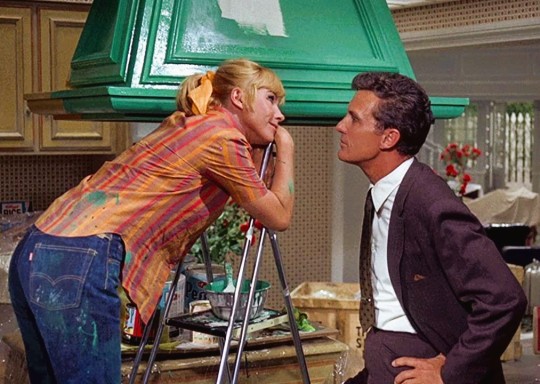
Bibi Andersson-Robert Stack "Historia de una mujer" (Storia di una donna) 1970, de Leonardo Bercovici.
14 notes
·
View notes
Link
Berit Elisabet Andersson, known professionally as Bibi Andersson, was a Swedish actress who was best known for her frequent collaborations with filmmaker Ingmar...
Link: Bibi Andersson
0 notes
Text
On this day in Wikipedia: Sunday, 14th April
Welcome, ongi etorri, bonvenon, mirë se vjen 🤗 What does @Wikipedia say about 14th April through the years 🏛️📜🗓️?

14th April 2023 🗓️ : Event - Jupiter Icy Moons Explorer The Jupiter Icy Moons Explorer (JUICE) is launched by the European Space Agency. "The Jupiter Icy Moons Explorer (Juice, formerly JUICE) is an interplanetary spacecraft on its way to orbit and study three icy moons of Jupiter: Ganymede, Callisto, and Europa. These planetary-mass moons are planned to be studied because they are thought to have beneath their frozen surfaces..."

Image licensed under CC BY-SA 3.0 igo? by ESA
14th April 2019 🗓️ : Death - Bibi Andersson Bibi Andersson, Swedish actress (b.1935) "Berit Elisabet Andersson (11 November 1935 – 14 April 2019), known professionally as Bibi Andersson (Swedish: [ˈbɪ̂bːɪ ˈânːdɛˌʂɔn]), was a Swedish actress who was best known for her frequent collaborations with filmmaker Ingmar Bergman. ..."
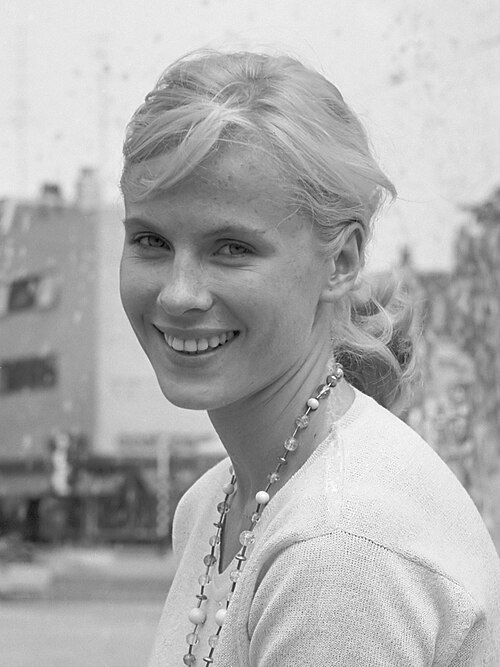
Image licensed under CC BY-SA 3.0 nl? by Harry Pot
14th April 2014 🗓️ : Event - Boko Haram Boko Haram militants kidnapped 276 schoolgirls from a government secondary school in the town of Chibok, Nigeria. "Boko Haram, officially known as Jamā'at Ahl as-Sunnah lid-Da'wah wa'l-Jihād (Arabic: جماعة أهل السنة للدعوة والجهاد, lit. 'Group of the People of Sunnah for Dawah and Jihad'), is an Islamist jihadist organization based in northeastern Nigeria, which is also active in Chad, Niger, northern Cameroon,..."

Image licensed under CC BY-SA 4.0? by The ham bag
14th April 1974 🗓️ : Birth - Da Brat Da Brat, American rapper "Shawntae Harris-Dupart (née Harris; born April 14, 1974), better known by her stage name Da Brat, is an American rapper. Born and raised in Chicago, she began her career in 1992 and signed with Jermaine Dupri's So So Def Recordings two years later to release her debut studio album, Funkdafied..."

Image licensed under CC BY 3.0? by Sister Circle TV
14th April 1924 🗓️ : Birth - Mary Warnock, Baroness Warnock Mary Warnock, Baroness Warnock, English philosopher, and academic (d. 2019) "Helen Mary Warnock, Baroness Warnock, (née Wilson; 14 April 1924 – 20 March 2019) was an English philosopher of morality, education, and mind, and a writer on existentialism. She is best known for chairing an inquiry whose report formed the basis of the Human Fertilisation and Embryology Act 1990...."
14th April 1819 🗓️ : Birth - Harriett Ellen Arey Harriett Ellen Grannis Arey, American educator, author, editor, and publisher (d. 1901) "Harriett Ellen Arey (née Grannis; pen name, Mrs. H. E. G. Arey; April 14, 1819 – April 26, 1901) was a 19th-century American educator, author, editor, and publisher. Raised in New England, she was one of the first women in the United States to study in a co-educational environment. In Cleveland,..."

Image by slowking4
14th April 🗓️ : Holiday - Christian feast day: Anthony, John, and Eustathius "Anthony, John, and Eustathius (Eustathios, Eustace; Russian: Антоний, Иоанн and Евстафий, Lithuanian: Antanas, Jonas ir Eustachijus; Martyrs of Vilnius, Russian: Виленские мученики, Lithuanian: Vilniaus kankiniai) are saints and martyrs (died 1347) of the Russian Orthodox Church. Their feast day is..."

Image by Unknown authorUnknown author
0 notes
Text

Bibi Andersson in Story of a Woman or Storia di una donna (1970)
Karin studies music in Rome and falls in love with Bruno. She learns that he is married and therefore returns to Sweden. She meets David. They marry and have a daughter. David is sent to Rome. Karin meets Bruno again.
#Bibi Andersson#Story of a woman#Storia di una donna#1970#drama#film#cinema#70s#Sweden#Italy#Rome#universal pictures#Robert Stack#James Farentino#love
2 notes
·
View notes
Text
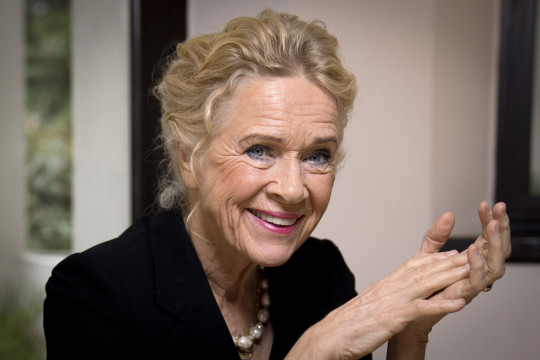
Liv Ullmann, cinema royalty and major Cannes draw, looks back
CANNES, France
Very few are capable of capturing people's attention at the Cannes Film Festival like Liv Ullmann.
At 84, Ullmann is unabashed cinema royalty, and directors have flocked to greet her at this year's festival. Pedro Almodóvar sought her out at a luncheon. Todd Haynes endeavored to get word to her that his latest film, “May December,” is inspired by “Persona," the 1966 film that began her decade with Ingmar Bergman.
After meeting Ullmann, “The Zone of Interest” director Jonathan Glazer pressed his hand against his chest to catch his breath.
Ullmann has been coming to Cannes longer than she can remember. She's pretty sure there's a hotel suite somewhere named after her. But after being here in just about every capacity — with “Cries and Whispers" in 1973, her own “Faithless” in 2000, president of the jury in 2001 — she was in Cannes for a different reason. Dheeraj Akolkar’s documentary series, “Liv Ullmann: A Road Less Travelled,” played in the Cannes Classics section.
“I've never been here when someone else has made a movie about me or my life," says Ullmann. “That makes it so different and maybe a little shameful, somehow. Because I'm an actress and a director.”
In an interview, the Norwegian actor, who lives in Boston, reflected on the passing of time and her halcyon decade with Bergman, one of cinema's great collaborations. Ullmann starred in 10 of Bergman's films, including “Scenes From a Marriage” and “Saraband,” and she directed two of his screenplays. “A Road Less Travelled” streams on Viaplay beginning June 22nd.
AP: Having been such a central part of arthouse heyday when filmmakers like Bergman, Godard and Truffaut were such a part of culture, do you ever lament that today's most daring movies seem to reside less in the spotlight?
ULLMANN: They make incredible movies now. You know, I saw Cate Blanchett last year. What an actress. Art, it’s made today. But so many other films are also reflection of this time. And I mean, everything that won Oscars this year, I didn’t even understand them all. It doesn't mean that there's something wrong with them or there's anything wrong with me.
I sometimes miss that there aren't more of the movies we used to call classical. That's about aging, too, maybe. What I’m most nervous for is that all these serials that are everywhere is removing us so far from what film really was. The art of the lighting, the art of the cinematographer, the art of the director — that kind of language. I like where I came from.
AP: How clearly do you remember meeting Bergman?
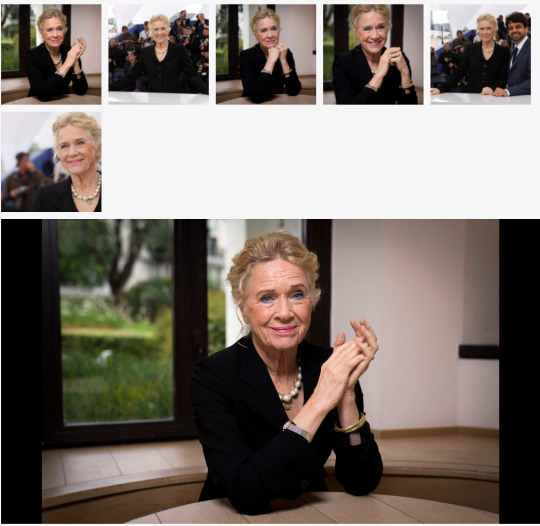
ULLMANN: Bibi Andersson, who was my best friend and we had done some movies together, I visited her in Sweden. We were walking on the street, and that’s where Ingmar came and spoke with her. He knew who I was because I had filmed a lot. He said, “Oh, well, I’d like you to be in one of my films.” And so maybe that’s why I also experienced everything (in film) more personally because it happened like that, Ingmar and me.
AP: He was immediately struck by you in that meeting, but what was your first impression of him?
ULLMANN: Oh, I was so impressed. I'm shy and then I was really shy. I never spoke. When he said he wanted me in one of his movies, I was shocked. Luckily, I didn't have any lines in the movie. It's strange he did that with me because I was 25. I was young. I see the movie as about him having reached middle age and wanting to stop life and go into himself. Then he picked me. I was him. And I think I was him in many of the movies. We were not alike each other but in certain ways we were. There is a reason he then used me continually until he died.
AP: How would you describe how deep your connection was?
ULLMANN: He said that. You and I are painfully connected. We lived together for five years but maybe the most wonderful connection was when we lived separately. We became more connected that way. I came to Fårö (the island he lived on) the night he died and he was already on his way.
AP: Did you share any words on his death bed?
ULLMANN: He was already on his way. One thing I did say. The last film we did together was “Saraband." That's about a woman who comes to her husband many years after it's over. And he asks her, “Why did you come to me?” She says, “You called for me." When I was sitting there on the bed, I said, “If you're wondering why I'm here, you called for me.” He may have heard that, I don't know.
AP: You've often been described as his “muse” but that doesn't seem the right word for your collaboration.
ULLMANN: I don't think I was a muse but you can say that. I did a lot of things that he wanted to do that he didn't do. I traveled. I went into the world. I became famous. The strange thing with all these actors who he loved dearly, he didn't like them to go. Bibi Andersson and Max von Sydow. But he thought it was fun with me. I don't know why. When I did “A Doll's House," he came to New York. He hated to travel. He enjoyed what I did. There was so much I got to do because I wasn't him, and maybe he would have loved to do. All his seriousness, of course that wasn't me.
AP: You consider yourself at heart a theater actor, but what was your relationship to the camera? In the documentary, Blanchett says you were "looking up at the world sort of with a face of unconditional love.”
ULLMANN: If you’re really close to somebody you love, when you look at each other, you know everything about each other. I see the camera that way. I don’t have to be shy. You are an actor from the inside. Your soul, your your heart can come out if you want to show the camera the real truth. It tells what is under there. It's nothing you can act or do Stanislavski about. It's not your brain. Your brain is not the actor. It's from here (points to heart). If you relax your body, the camera will take it.
3 notes
·
View notes
Text
March 11, 2021: The Seventh Seal (Review)
Because I could not stop for Death, he kindly stopped for me...

The Seventh Seal is...a lot. And while it’s not exactly the most difficult film to watch or understand, at least on a cursory level, it’s still a hefty movie on its own. I loved it, to be fair, but it is...difficult to talk about critically for me. Sorry, I just haven’t leveled up that far yet.

Well, despite that, I’ll give it the old college try, yeah? Check out Recap Part One and Part Two for more!
Review

Cast and Acting: 10/10
Before being known for his groundbreaking landmark role in Star Wars: The Force Awakens (kidding, nobody remembers that), Max von Sydow was best known overseas and at home for this film. And I completely understand why, because he was excellent in this film, playing a wonderfully complex and conflicted Antonius Block, a man struggling with his faith in a time and position that demands absolute faith. Von Sydow plays the role well, and is actually more memorable for me than Death. Speaking of Death, Bengt Ekerot is hauntingly good as what is essentially the Grim Reaper. He’s not sinister or cruel, he’s just a force of nature, and one with a sense of humor. He’s pretty much perfect in the role.
And, for the record, there’s not a weak member of this cast. If I absolutely had to choose, I guess they were Åke Fridell and Erik Strandmark as Plog and Jonas Skat respectively, but they were meant to be more comedic characters, so using them as “bad-acting-scapegoats” is not only unfair, but straight-up inaccurate. Nils Poppe plays a kind (and kinda psychic) Jof, Bibi Andersson is sweet as his wife, and Gunnar Björnstrand‘s cynical, cutting, and uniquely atheistic Jöns is...maybe my favorite character? Yeah, he’s pretty great, to be honest. In any case, I’ve got no complaints with this category.

Plot and Writing: 9/10
This is where my non-English-major brain runs into a little difficulty. And I say “a little” because this isn’t the most oblique script, but it’s still somewhat oblique. There’s a lot there, is what I’m saying. Plot’s straightforward enough, based on the play Trämålning, by Ingmar Bergman himself. Knight questions faith, plays a game and waxes poetic with Death, some shenanigans happen, and eventually everybody dies. There’s a lot more to it, but I can at least remember it without too many problems or omissions.
Bergman’s writing, though, is...a lot. And I’m saying that specifically for me, not for anybody else. The amount of symbolism that’s going right over my head is palpable, which was clear through reading even the simplest film essay about the movie. For example, the “Silence of God” was a major theme, and I barely picked up on that outside of the scene shown above. Not to mention the symbolism behind a game with Death just basically being a simple metaphor with life in general. And also, while I’m at it...why did everybody die? Did the castle collapse, was it the plague brought by Raval...or was it just their time? I looked it up, and it looks like I’m not the only one with questions, so that makes me feel better. Nevertheless, the writing in this film is still brilliant, please don’t get me wrong there.

Directing and Cinematography: 10/10
It’s amazing. I mean, it’s Ingmar Bergman, and it’s genuinely just a brilliant looking film. Gunnar Fischer and his cinematography are also to blame here, but the movie’s definitely got a unique setting and look, which is well framed by some great direction and shot composition all throughout. No complaints here.

Production and Art Design:10/10
Same with this category, because it’s definitely medieval Sweden here. Feels right, looks right, and the atmosphere feels like we’ve stepped directly into the Dark Ages. And, yeah, I love it. High rank also deserved here.

Music and Editing: 8/10
And as for the music and editing, both are great, and done by Erik Nordgren and Lennart Wallén respectively. That musical score, throughout the movie, is both fitting to the setting and memorable...mostly. I actually can’t remember it at the moment, but I can recognize it once I’ve heard it. Editing is also greatm but not quite as notably good as in some other recent films. So, both are great...but I don’t know that I can say they’re perfect. Maybe I was just too distracted by the script...

94%, and the Seventh Seal is now closed.
However, that doesn’t mean it’ll never be opened again. This film DEMANDS future viewing, and multiple viewings at that. I’ll have to revisit this one day, maybe while reading a film essay about it. In any case, this film was amazing, make no mistake, and I recommend it to anybody who’s interested.
Let’s see, I’ve done Greek myth, then Japanese ghost story, then European surrealist film. Lets loop back around to Greek myth again!

March 12, 2021: Jason and the Argonauts (1983)
#the seventh seal#det sjunde inseglet#ingmar bergman#gunnar björnstrand#bengt ekerot#nils poppe#max von sydow#bibi andersson#fantasy march#welcome to a show about death#user365#365 movie challenge#365 movies 365 days#365 Days 365 Movies#365 movies a year
7 notes
·
View notes
Text
“Era come se le finestre della sua mente fossero tutte spalancate di modo che tra realtà e immaginazione, tra fatti e sogni non riusciva più a capire la differenza”. Linn Ullmann: il romanzo sul padre, Ingmar Bergman
Linn Ulmann nasce nel 1966, è la figlia del grande regista Ingmar Bergman e della sua straordinaria musa, Liv Ullmann. Quando nasce Linn, esce al cinema “Persona”, pellicola di culto, interpretata dalla madre e da Bibi Andersson. Bergman visse qualche anno con Liv e la figlia, divorziando dalla quarta moglie, la pianista Käbi Laretei. I due si lasciarono, infine, e il regista, nel 1971 si unì a Ingrid von Rosen. Linn Ullmann appare, bambina, in “Sinfonia d’autunno”, il film di Bergman del 1978, con Ingrid Bergman e Liv Ullmann. Crescendo, Linn è diventata scrittrice di un certo successo: i suoi libri sono editi in Italia da Mondadori (“Prima che tu dorma”, “La luce sull’acqua”, ad esempio) e da Guanda (“La ragazza dallo scialle rosso”). Il suo ultimo romanzo, “Unquiet”, è stato tradotto in inglese.
***
Quando il padre di Linn Ullmann aveva superato gli 80, cominciò a riferirsi alla sua vita come all’“epilogo”. La mattina, a letto, sopportava i dolori, concedendosene uno per decennio: se fossero stati meno di otto, si sarebbe alzato, altrimenti no. Queste strategie dimostrano realismo più che quiete, e una incrollabile determinazione a lavorare.
Il padre di Linn Ullmann è il grande regista svedese Ingmar Bergman, il suo ultimo lavoro la collaborazione con la figlia, per scrivere un libro che catturasse i suoi pensieri, definitivi. “Quando un lavoro funziona, lo sai. Stavamo lavorando bene, ci divertiva discutere la forma che avrebbe preso quel libro”. Il titolo che avrebbe preferito, diceva, scherzando, era “Beccati & ammazzati a Eldorado Valley”. Forse avrebbe realizzato un film con quel titolo.
Invece, ciò che è emerso oltre un decennio dopo la morte di Bergman è il sesto romanzo di Linn Ullmann, Unquiet, inquieto, un ibrido di memorie, finzioni, riflessioni, su una struttura frammentaria che ricalca l’amore di Bergman per le suite per violoncello di Bach. È, dice la Ullmann, “la raccolta delle rovine del libro che non ho scritto”. Mentre costruivano il libro, tramite numerose lettere, telefonate, incontri, Bergman “continuava a invecchiare”. Quando il lavoro iniziò sul serio, nella primavera prima della sua morte, alla fragilità fisica si sommò qualcos’altro. “In pochi mesi il suo linguaggio era cambiato, la perdita della memoria era evidente. Era come se le finestre della sua mente fossero tutte spalancate di modo che tra realtà e immaginazione, tra fatti e sogni non riusciva più a capire la differenza”.
Sei conversazioni sono state registrate ad Hammars, la casa di Ingmar Bergman sull’isola di Fårö: sono quelle il filo rosso di Unquiet, anche se per molti anni la Ullmann non le ha ascoltate. “Era fisicamente doloroso ascoltare quei nastri. Voglio dire… avrei dovuto iniziare prima, avrei dovuto insistere, avrei dovuto fare domande diverse, avrei dovuto avere un registratore migliore… non avrei dovuto essere sempre così severa…”. È stato il marito, lo scrittore Niels Fredrik Dahl, a recuperare i nastri a intimarle di ascoltarli. “Ho ascoltato. Ho trascritto. Ho tradotto dallo svedese al norvegese. È stato commovente”.
Ingmar Bergman con la figlia Linn
Linn è nata nel 1966, l’anno in cui esce Persona, in cui sua madre, Liv Ullmann, è protagonista: una donna, attrice, che improvvisamente smette di parlare e viene portata in un cottage da un’infermiera, interpretata da Bibi Andersson. Bergman ha scritto la sceneggiatura rapidamente, mentre si stava riprendendo da una polmonite, pensando alle due donne; il film è stato girato a Fårö, che in seguito diventò non solo la casa, ma il regno del regista, con un cinema e una sala per la scrittura. Bergman e la Ullmann hanno collaborato in una decina di film, iniziando una relazione. Lui aveva 47 anni, era stato sposato quattro volte, aveva otto figli; lei era di vent’anni più giovane, era sposata (in effetti, il marito medico era presente alla nascita di Linn). Dopo che Bergman e la Ullmann, una delle sue muse, si sono separati, lui si è sposato ancora. Linn, il nono e ultimo figlio, trascorreva le estati ad Hammars; il resto del tempo lo viveva con la madre, tra Oslo e gli Stati Uniti, con la nonna e una serie di tate interpellate quando la madre era impegnata. “Ero la figlia di lei e la figlia di lui, ma non la loro figlia: non eravamo mai in tre, quando sfoglio le immagini sulla scrivania non c’è una sola fotografia di noi tre, insieme. Lui, lei, io. Quella costellazione non esiste”, scrive in Unquiet.
La narrazione in prima persona è intervallata da una prosa romanzesca, in cui orbitano le vicende della “ragazza”, del “padre”, della “madre”. I nomi non vengono mai svelati. Tra le fonti cita Rachel Cusk, Emily Dickinson, Pina Bausch… Se Bergman è il fulcro del libro, Liv Ullmann, che ora ha 81 anni, resta ai margini. La solitudine e l’introspezione di Hammars rappresentano il mondo di Bergman, mentre i furori di Oslo, Los Angeles, New York sono i luoghi della Ullmann, spesso in compagnia della figlia, che si fa arruffare i capelli da Margot Fonteyn e nel corridoio di un lussuoso albergo di Manhattan riceve una scatoletta di caviale dall’ennesimo corteggiatore russo della madre. I diversi destini dei suoi genitori raffigurano lati opposti della cultura: “Un artista maschio, tradizionale, un’attrice donna: uno che guarda, l’altra che è guardata”.
Linn ricorda l’amore disperato verso la madre, da bambina. “Ero follemente innamorata di lei. Non solo per la sua incredibile bellezza, e ne scrivo di quella bellezza: quanto era vivida, presente, forte quella bellezza, e quel desiderio, immenso, immeditato. Quando sei bambino non hai le parole per descrivere quell’amore; quando sei adulto, ti è chiaro che quell’amore è disperato, sei consapevole che se quella persona sparirà, morirai anche tu. Non potresti vivere”.
Non è facile essere la figlia di una donna che lavora nel cinema, negli anni Settanta, nata da una relazione clandestina, che vive sotto gli occhi indagatori del pubblico. Linn odiava i paparazzi, le fotografie in cui compariva anche lei, sui giornali, come fosse una cartolina. “Non volevo essere una bambina. Non sapevo cosa significasse essere una bambina. Mi vergognavo di essere una bambina”. Verso la fine del libro, la ragazza di 16 anni parte per Parigi, da sola. Ciò che accadrà è la base del secondo volume di quella che la Ullmann immagina come una trilogia. “Il ritratto della ragazza si ferma qui. Non va oltre e non esplora il legame tra madre e figlia. L’incontro accadrà più tardi. Lo scriverò”.
Quando Unquiet è stato pubblicato in Norvegia, una giornalista ha telefonato a Linn Ullmann, chiedendole se potesse dedicarle “cinque minuti” per esaminare quanto la finzione del libro si discostasse dalla verità della sua vita. Lei si è messa a ridere. Cinque minuti. Non sarebbe nemmeno il principio. In effetti, questo è il lavoro di una vita.
Alex Clark
*L’articolo è stato pubblicato in origine su “Guardian”, qui
**In copertina: Ingmar Bergman e Liv Ullmann: la figlia Linn nasce nel 1966
L'articolo “Era come se le finestre della sua mente fossero tutte spalancate di modo che tra realtà e immaginazione, tra fatti e sogni non riusciva più a capire la differenza”. Linn Ullmann: il romanzo sul padre, Ingmar Bergman proviene da Pangea.
from pangea.news https://ift.tt/3hC3UM9
1 note
·
View note
Text
Bibi Andersson Bio, Wiki, Age, Married, Net Worth, Twitter, Instagram, Known Facts
Bibi Andersson Bio, Wiki, Age, Married, Net Worth, Twitter, Instagram, Known Facts
Bibi Andersson Bio
Berit Elisabeth Andersson, known professionally as Bibi Andersson, was a Swedish actress.
Trivia and Bibi Andersson QuickInfo
Bibi Andersson Quick Biography Born She was born on 11 November 1935 in Kungsholmen, Stockholm, Sweden Died 14 April 2019 Spouse Gabriel Mora Baeza (m. 2004), Per Ahlmark (m. 1978–1981), Kjell Grede (m. 1960–1973) Children Jenny Grede Awards Cannes Best…
View On WordPress
#Bibi Andersson Age#bibi andersson barn#Bibi Andersson Bio#Bibi Andersson Biography#bibi andersson dead#bibi andersson death#bibi andersson died#bibi andersson familj#Bibi Andersson Family#Bibi Andersson How old is#Bibi Andersson Instagram#bibi andersson morte#bibi andersson sjuk#bibi andersson skådespelare#bibi andersson skådespelerska#Bibi Andersson Who is#Bibi Andersson Wiki#gabriel mora baeza#jenny grede dahlstrand#krister henriksson bibi andersson
0 notes
Text
Bibi Andersson: Sweden’s Wild Strawberry (1935-2019)
Bibi Andersson, the iconic Swedish actress, who died at the age of 83 on 14 April 2019, will forever be remembered for her stage and screen collaborations with Ingmar Bergman.
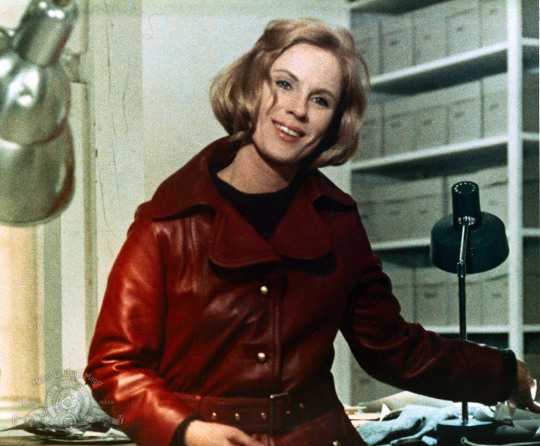
The great Swedish director discovered her while directing a commercial, in which the 15-year-old had to kiss a swineherd 100 times to get a bar of Bris soap. After a single scene in Smiles of a Summer Night (1955), he went on to cast her in 12 further features.
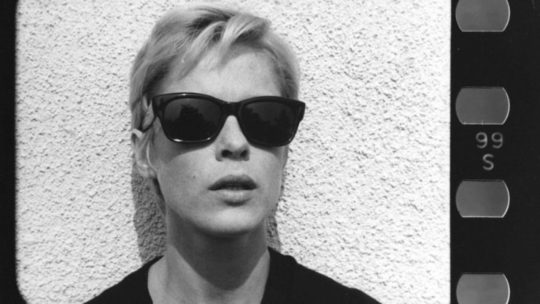
Seen from the vantage of 2019, the extraordinary actresses who came to prominence in the films of Ingmar Bergman — Harriet Andersson, Liv Ullmann, Ingrid Thulin, and the sunny and anguished, incandescent and heartbreaking Bibi Andersson, who died Sunday — enjoyed a relationship with their director that was rooted in a 20th-century male-gaze ethos.

Bergman was famously obsessed with these women: with their faces, their personae, the dramatic possibilities they opened up to him. He carried on off-screen romantic relationships with most of them (including Bibi Andersson), and in his movies he placed them on a grand pedestal of extravagant expression. The pedestal was framed not with a medium or long shot but with a starkly penetrating close-up. You could say that Bergman used the camera to probe their very being.
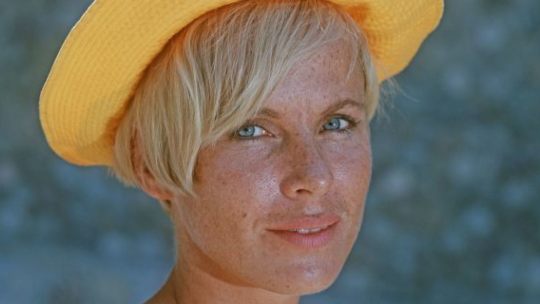
For much of her early career, Andersson was essentially the Swedish Doris Day, as her “professional innocent” came to symbolise “simple, girlish things”. Bergman exploited this image in The Seventh Seal, in which she escapes Death as part of the surrogate Holy Family, and played against it in Wild Strawberries (both 1957), which saw Andersson double up as Victor Sjöström’s treacherous lost love and a pipe-smoking hitcher.
Bibi shared the best actress prize at Cannes as an unmarried mother weighing up her options in the director’s Brink of Life (1958). But it was Vilgot Sjöman who shattered the demure myth, as Andersson followed a Berlin festival prize for The Mistress (1962) with the incestuous saga My Sister My Love (1966).

Such performances prompted Hollywood offers, with Andersson performing solidly as the mother of an Apache son in Duel at Diablo (1966), the wife of a Russian colonel in John Huston’s The Kremlin Letter (1970), whistleblower Steve McQueen’s supportive spouse in the Ibsen adaptation An Enemy of the People (1978), and an ice age survivor alongside Paul Newman in Robert Altman’s Quintet (1979).

But Andersson was always more at home in her native Scandinavia, following a poised cameo in Gabriel Axel’s Babette’s Feast (1987), with best supporting actress triumphs at the Swedish Guldbagge awards for Shit Happens (2000), Elina (2002) and Arn: The Knight Templar (2007), in which she plays a scheming mother superior.

But it was in movies like “Wild Strawberries” or “Persona,” Bibi Andersson projected the spark of her inner fire and dismay, etching it onto the consciousness of everyone who watched her. She revealed what it was now possible for a woman to feel. Were the emotions new? In a way. But as much as that, showing them was new. And that was the change. She was the actress as alchemist.
RIP Bibi Andersson

20 notes
·
View notes
Text
Bibi Andersson sul set di Persona, 1966. Archivio fotografico Bergman Center, isola di Fårö.

4 notes
·
View notes
Text

Storia di una donna (1970), dir. Leonardo Bercovici
12 notes
·
View notes
Photo
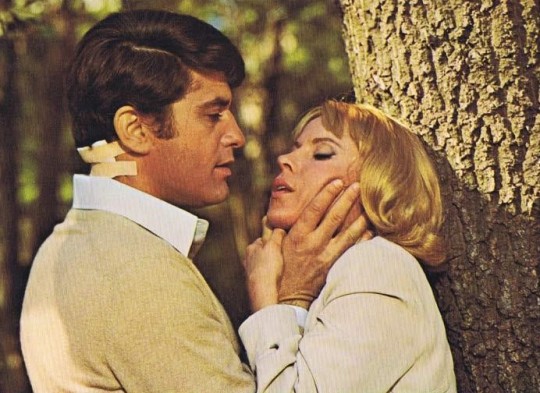
James Farentino-Bibi Andersson “Historia de una mujer” (Storia di una donna) 1970, de Leonardo Bercovici.
1 note
·
View note
Text
I sadly learned this morning that Bibi Andersson, who stars un many Bergman's films, passed away yesterday, on Sunday 14 April 2019.
She stars in several films with Max, most notably "Wild Strawberries" & "The seventh seal".
She will be missed.
2 notes
·
View notes
Link
A Great Actress Leaves Us! - Phroyd
Bibi Andersson, the luminous Swedish actress who personified first purity and youth, then complexity and disillusionment, in 13 midcentury Ingmar Bergman films, died on Sunday in Stockholm. She was 83.
Her death was confirmed by the director Christina Olofson to several Swedish news outlets. Ms. Andersson had a stroke in 2009 and had been hospitalized in France.
Her emotionally complex role in “Persona” (1966), the film that made her acting reputation, was one of the great stereotype reversals in film history, a definite departure for the thirtyish Ms. Andersson, who had begun acting in her teens. Before that film, Bergman had given her roles “symbolizing simple, girlish things,” she told The New York Times in 1977. “I used to be called a ‘professional innocent.’”
Few moviegoers could disagree. In “The Seventh Seal” (1957), Ms. Andersson played a gentle, young medieval-era wife and mother who was part of a traveling acting troupe. Whenever she appeared onscreen — with her long “Alice in Wonderland” blond hair and beatific glow — the sun came out and birds sang.
In “Wild Strawberries” (1957), she was first seen as the protagonist’s turn-of-the-century sweetheart, sitting on the forest ground collecting berries in a tiny basket while wearing a fairy tale maiden’s striped and ruffled dress, her hair in a combination of braids and Victorian ringlets. But in the same film, she also played the brash, short-haired, tomboyish, contemporary teenage hitchhiker, smoking a pipe just because she knew she shouldn’t.
The haircut may have been a catalyst. When she did “Persona,” it was with a close-cropped pixie cut; she played a sensible nurse with reading glasses and a sunny exterior who reveals herself to be both talkative and troubled. The character’s personality then seems to merge with that of her patient (Liv Ullmann), an actress who has had a breakdown and refuses to speak. When the film opened in the United States in 1967, Bosley Crowther of The New York Times called it “a veritable poem of two feminine spirits exchanging their longings, repressions and mental woes.”
Most of Ms. Andersson’s acting honors, like most of her film and stage work, were European. In addition to winning four Guldbagge Awards, the Swedish equivalent of the Oscar, she was named best actress at the Cannes Film Festival in 1958 for “Nara Livet” (“Brink of Life”), sharing the award with three co-stars, and best actress at the Berlin Film Festival in 1963 for the title role in “Alskarinnan” (“The Mistress”). Paradoxically (and surprisingly, to many), neither was a Bergman film.
n the United States, she did win National Society of Film Critics awards twice: as best actress for “Persona” and as best supporting actress for “Scenes From a Marriage” (1974), in which she and Jan Malmsjo played the central couple’s unhappily married, viciously bickering dinner guests. But she never became a full-fledged American star.
Her earliest Hollywood effort, which preceded the American premiere of “Persona” by six months, was “Duel at Diablo” (1966), a forgettable western starring James Garner. Ms. Andersson was an American white man’s wife who had been abducted by Apaches and wanted to go back.
A decade or so later, she played the soft-spoken psychiatrist of a schizophrenic teenager (Kathleen Quinlan) in “I Never Promised You a Rose Garden” (1977) and Steve McQueen’s Norwegian wife in a drama that was an unusual choice for him, “An Enemy of the People” (1978), Henrik Ibsen via Arthur Miller.
She did films for the directors John Huston and Robert Altman. She was Richard Chamberlain’s mother (although Mr. Chamberlain was a year older) in the 1985 mini-series “Wallenberg: A Hero’s Story,” about the Swedish diplomat who saved thousands of Jews from the Nazis. And she made a glamorous cameo appearance as a helpful Stockholm socialite in flashback scenes of “Babette’s Feast” (1987).
Critics were kind. David Thomson, in “Biographical Dictionary of Film,” called her “the warmest, most free-spirited of Bergman’s women.” Bergman, who employed certain actresses in film after film, was notorious for his claustrophobic, almost fetishistic relationships to them during filming. The fact that he and a number of the women also had affairs seemed almost secondary.
When Ms. Andersson made her Broadway debut, in 1973, Clive Barnes of The New York Times praised her “absolutely unforced naturalness.” Derek Malcolm of The Guardian once pronounced a particular screen performance “superb, even by her exalted standards.”
Berit Elisabeth Andersson was born in Stockholm on Nov. 11, 1935, the younger of two daughters of Josef Andersson, a businessman, and the former Karin Mansson, a social worker.
In her teens, determined to become an actress, Berit began taking classes and appearing as an extra in Swedish films. She made her credited movie debut in “Dum-Bom” (1953), a comedy about a mayor whose twin brother is a clown. In 1954, she was accepted into the Royal Dramatic Theater’s prestigious acting school in Stockholm.
Her work with Bergman began earlier, however. She appeared in a commercial for Bris soap, which Bergman had agreed to do because of a 1951 national film-industry strike. Four years later, he cast her in “Smiles of a Summer Night”; her character name was Actress, and she had one scene.
Other Bergman-Andersson projects included “The Devil’s Eye” (1960) in which Satan sends Don Juan back to earth to seduce a young vicar’s daughter; “The Passion of Anna” (1969), in which Ms. Andersson plays a recent widow trying to hold herself together; and “The Touch” (1970), about a married woman having an affair with a neurotic American. The film, Bergman’s first in English, also starred Elliott Gould.
Ms. Andersson’s last films were “The Frost,” a 2009 drama about a couple grieving for their son, and “Arn: The Knight Templar” (2010), originally a mini-series, in which she played an evil mother superior.
She had a long and busy stage career in Sweden, starring in classic works by Molière, Chekhov and Shakespeare, and even appeared twice on Broadway. Both “Full Circle” (1973), a wartime drama, and “The Night of the Tribades” (1977), with her frequent film co-star Max von Sydow, had particularly short New York runs.
After Ms. Andersson’s romantic relationship with Bergman in the 1950s, she married Kjell Grede, a Swedish screenwriter and director, in 1960; they divorced in 1973. Her second husband, from 1979 until their divorce in 1981, was the politician and writer Per Ahlmark. She did not marry again until 2004.
Ms. Andersson was married three times. Her survivors include a daughter, Jenny Grede Dahlstrand, and a sister, Gerd Andersson, a former ballerina with the Royal Opera.
In 1977, looking back on her first two decades of movie acting, Ms. Andersson told American Film magazine that she felt “no connection with what I was doing” in her early screen appearances, even describing them as corny. But there was one exception.
“‘Persona,’ on the other hand, I’m still proud of,” she said. “Each time I see it, I know I accomplished what I set out to do as an actress, that I created a person.”
Phroyd
2 notes
·
View notes